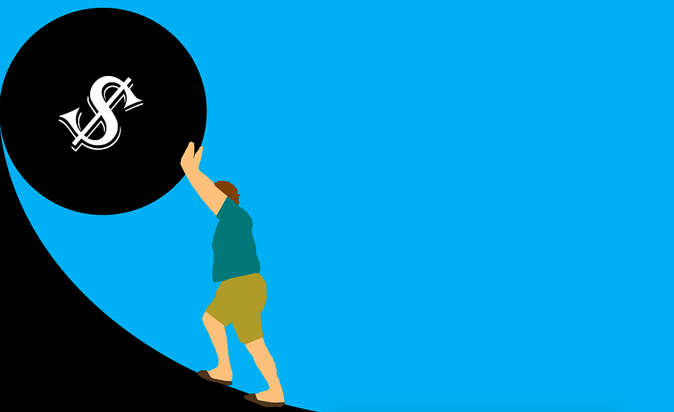How to Get Student Loans Out of Default — What You Need to Know About Loan Rehabilitation
In a perfect world, you'd be able to make your student loan payments on time every month. In fact, you'd pay extra.
But in reality, all of us can find ourselves with less cash than we need to pay the bills. If you've been struggling for long enough that your student loans are in default, you're probably looking for a way to get back into compliance with the terms of your repayment plan. Student loan rehabilitation may be your answer.
What is student loan rehabilitation?
When you rehabilitate a federal student loan, you're getting the opportunity to create a new, temporary repayment plan if your loans have gone into default.
Rehabilitation for private student loans is rare. However, it's always worth calling your lender to discuss your options if your loan has gone in to default.
Can it get me out of default?
The good news about student loan rehabilitation is that its primary purpose is to get you out of default.
If you satisfy the full terms of your loan servicer's rehabilitation plan, your loan will no longer be in default. The default will also be removed from your credit history, though the previous late payments will remain for seven years.
How does it work?
Of course, once you start diving into the ins and outs of student loan rehabiltation, your first question is probably: am I eligible for student loan rehabilitation?
You may be able to take advantage of student loan rehabilitation if you have Direct Loans, Federal Family Education Loans (FFEL), or Federal Perkins Loans.
If your loan has gone into default — generally the result of failing to make a payment for at least 270 days — rehabilitation is one option for bringing that loan out of default. You'll need to apply to your loan servicer for each individual loan you hold.
For FFEL and Direct Loans, you will be required to make nine voluntary, full payments in a 10-month period. That means you can miss one payment and still get your loans rehabilitated. If you have Federal Perkins Loans, you only get a nine-month period to make your nine full payments.
You may be wondering how you're supposed to make those full payments now if you couldn't make them before. Well, under a rehabilitation program, you're only responsible for payments that are 15% of your discretionary income. Calculating your discretionary income can be a little confusing, but it's a big part of how federal student loan payments are determined, so it's worth understanding.
In general terms, your discretionary income is the amount of money you have available each month after you've paid for necessities. The Department of Education employs a set formula for determining exactly what your discretionary income is, at least for the purposes of your student loan payments.
Your discretionary income is your adjusted gross income minus 150% of the federal poverty guideline for a family of your size. Fifteen percent of your discretionary income could be as low as $5 a month. Before you apply for rehabilitation, you may want to calculate your discretionary income.
If you're still unable to pay the amount that your loan servicer has set for your rehabilitation plan, you can ask for a new calculation by submitting documentation showing what your income and actual expenses are.
After you've submitted your nine full payments, your loan will no longer be in default. Your monthly payments will revert to the pre-default amount, and you will be able to apply for a different plan if you'd like to change your payments.
What are the pros and cons of rehabilitation?
If you're in default, rehabilitation sounds like a great idea. It is likely preferable to remaining in default, but there are some key points to keep in mind before you apply.
Pros:
-
Your default will be removed from your credit history.
-
If you complete the plan, you will no longer be in default.
-
You will have an opportunity to get out of default while making payments that are likely smaller than your previous payments.
-
After completing the rehabilitation plan, you will have access to federal benefits, like forbearance, deferment, loan forgiveness, and varied repayment plans.
Cons:
-
Your late payments will remain on your credit history.
-
You may have difficulty affording the full payments once your rehabilitation plan ends.
-
You may have to pay up to 16% of your loan balance in collection costs. The Department of Education is authorized to charge collection costs from borrowers in default.
-
You may only rehabilitate a loan once.
What are alternatives to student loan rehabilitation?
If student loan rehabilitation doesn't work with your finances, you may have other options. The primary alternative to student loan rehabilitation is student loan consolidation.
You may consolidate your federal student loans even if they are in default, and the process of consolidation will bring them out of default.
However, once you consolidate, you will be limited to income-driven repayment plans unless you are able to make three consecutive, full payments prior to consolidating. If you can make those payments, you'll be able to choose from all the available plans, including traditional or extended repayment plans.
The big downside to consolidation is that the default will remain on your credit report — along with the late payments — for seven years. If improving your credit history is important to you, rehabilitation after default may be a better option.
Whether you use rehabilitation or consolidation, you only have one opportunity to bring a loan out of default. Any future defaults would be handled by a collections agency.
If you're struggling to make your student loan payments or are already in default, consider rehabilitation or consolidation before you get too far behind. And learn how much you could save by consolidating.

